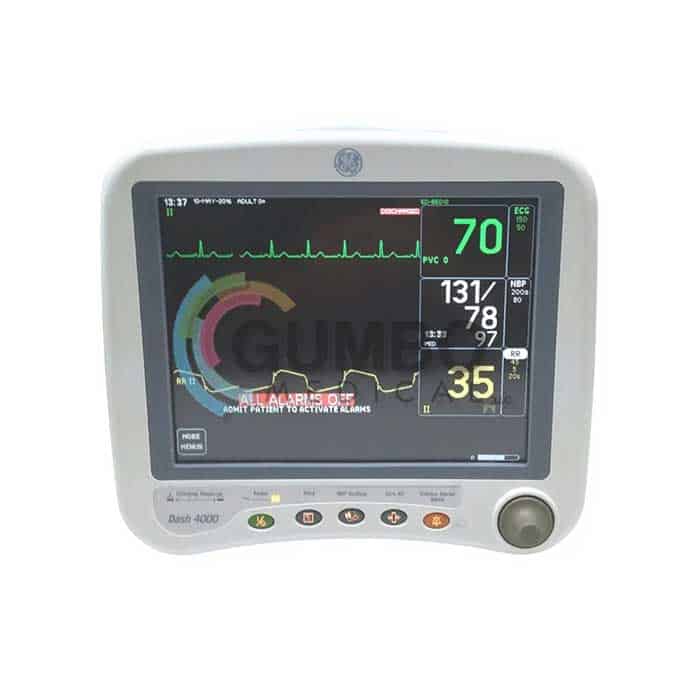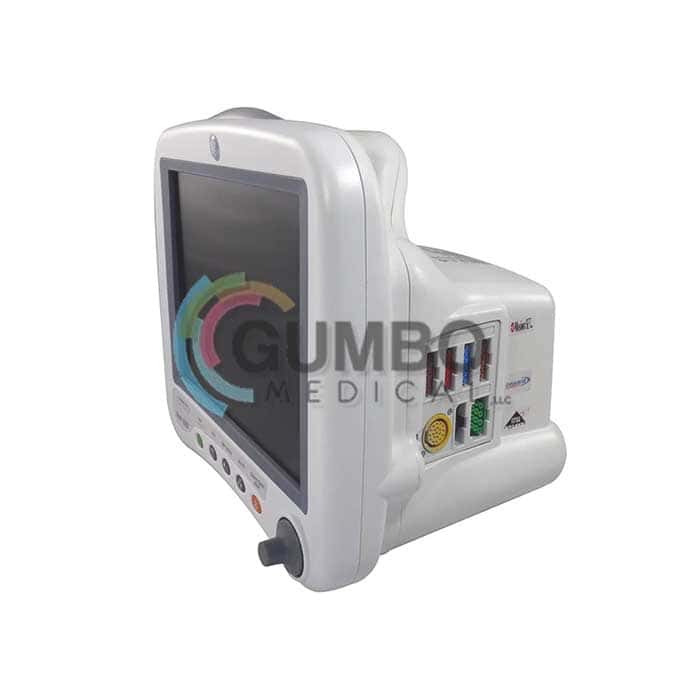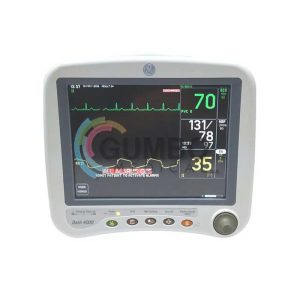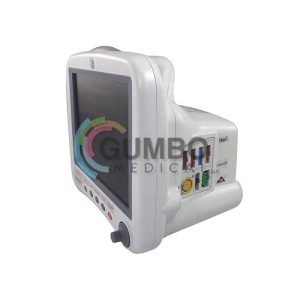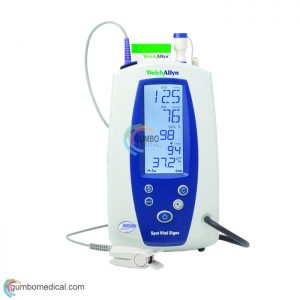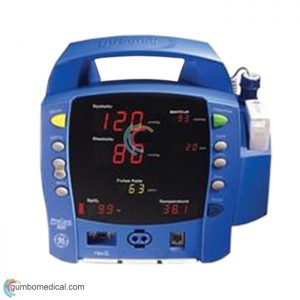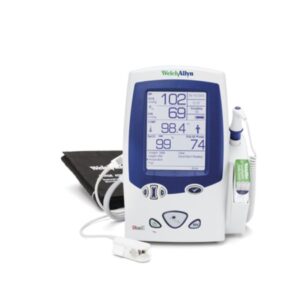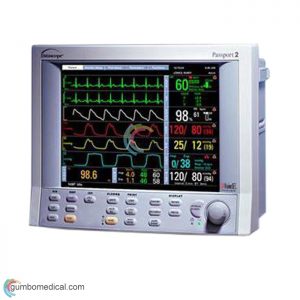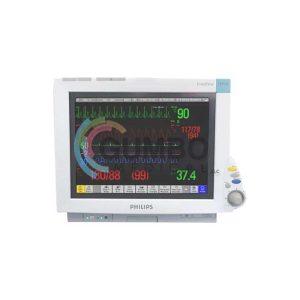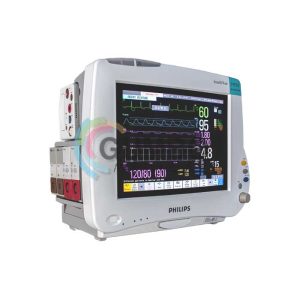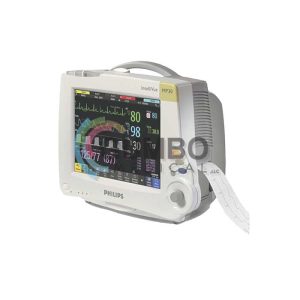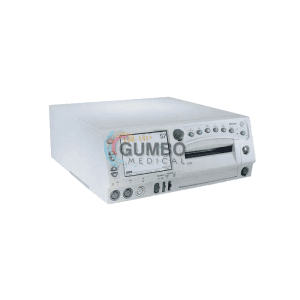The GE Medical Patient Monitor Dash 4000 is a lightweight, portable monitor designed for both high-acuity and low-acuity patient care environments. It runs on AC power or internal rechargeable batteries, making it ideal for bedside or transport use. Built with durability in mind, the Dash 4000 delivers real-time monitoring of vital signs and offers continuous cardiac and respiratory waveforms on a bright, easy-to-read display.
Versatile Clinical Use
The Dash 4000 supports ECG, non-invasive blood pressure (NIBP), SpO2, respiration, and temperature monitoring as standard, with optional modules for invasive pressure, CO2, and cardiac output. It features full arrhythmia analysis and customizable alarms for tailored patient care. The unit is commonly used in surgical suites, recovery rooms, ICUs, and during patient transport within the hospital.
Customizable Features & Configurations
Users can configure screen layouts, measurement parameters, and alarm limits to match clinical preferences or specific patient needs. The monitor stores patient data for up to 24 hours and includes trend review, snapshot, and event review functions. Networking capabilities also allow integration with electronic medical records and central monitoring stations.
Flexible Mounting & Portability
The Dash 4000 is built for mobility, weighing under 15 lbs and featuring a sturdy handle for easy carrying. It can be mounted on a rolling stand, wall, or bed rail using optional mounting accessories. Its compact footprint saves space while delivering full-featured performance.
Accurate, Dependable Performance
With GE’s proprietary DINAMAP SuperSTAT™ technology, the Dash 4000 ensures fast, accurate blood pressure readings even in challenging conditions. SpO2 readings remain stable during motion and low perfusion scenarios. The display shows up to 6 waveforms simultaneously and supports both adult and pediatric patient profiles.
Smart Connectivity & Data Management
Equipped with multiple communication ports and optional wireless capabilities, the Dash 4000 can transmit real-time data to centralized monitoring systems. Its built-in data storage and export functions make it easy to document and review patient information across shifts or during transitions of care.

